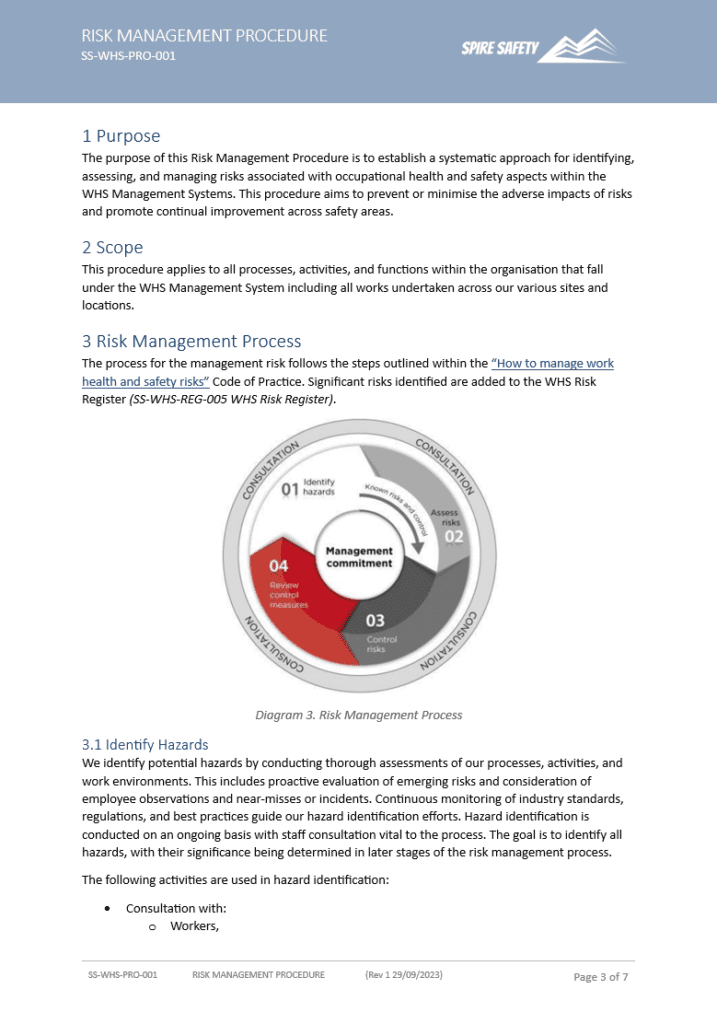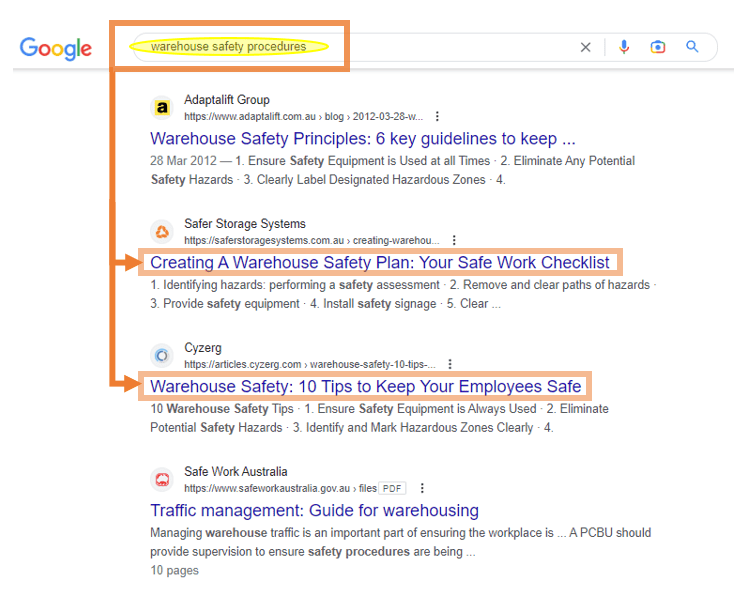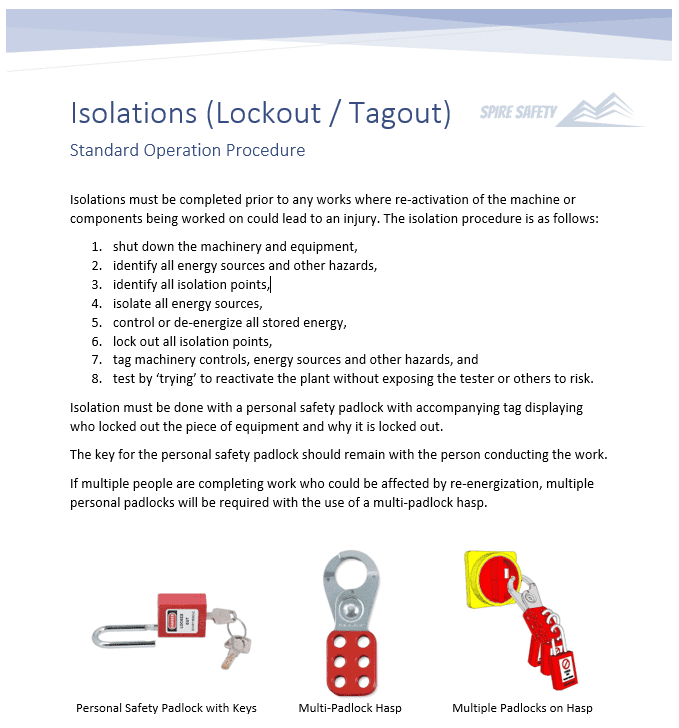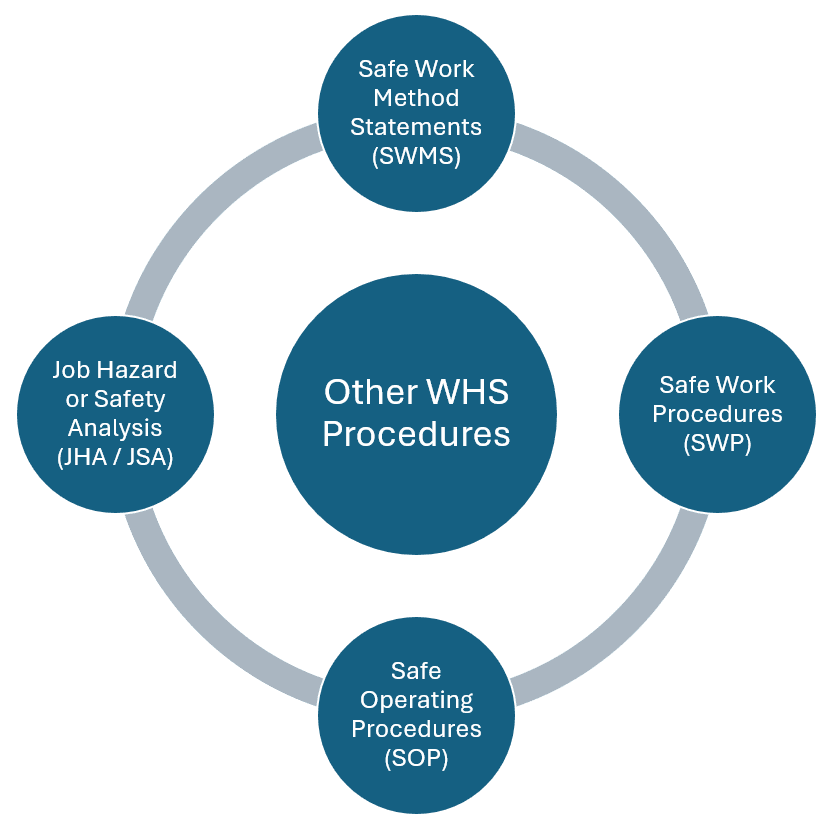The Complete Guide to WHS Policies and Procedures in Australia
What are WHS Policies and Procedures?
WHS policies and procedures form part of your organization’s WHS framework. They outline your organization’s processes and help guide work within your organization.
Policies are usually short documents that contain statements about the organisations overall WHS vision and commitment to workplace safety.
Procedures are usually longer documents that outline how a particular business function or hazard is managed.
Access our Free Resource Library
We provide free resources! Check them out here!
- Free Policies
- Free Procedures
- Free Forms and Tools
- Free Plant Risk Assessments
- Free Verifications of Competency
*For internal use only. Not for resale or redistribution. By downloading, you agree to our Free Resources Licensing Agreement.
These documents are templates only and must be customised for your business. Other aspects that may need to be considered include, but are not limited to, ensuring that:
- Relevant legal requirements have been met,
- Workplace specific risks are identified and managed, and
- Workers are consulted with during the customisation / review process.
WHS Policies vs WHS Procedures – What is the Difference?
Work Health and Safety Policies are usually short, overarching statements that guide an organization’s thinking, attitudes and values.
 Whereas WHS procedures are usually longer documents that give step-by-step guidance on how an organization manages safety issues, for example a First Aid Procedure or Risk Management Procedure.
Whereas WHS procedures are usually longer documents that give step-by-step guidance on how an organization manages safety issues, for example a First Aid Procedure or Risk Management Procedure.
 Work procedures are essential for any business that employs workers, and they must be clearly communicated to employees to ensure work activities meet WHS requirements.
Work procedures are essential for any business that employs workers, and they must be clearly communicated to employees to ensure work activities meet WHS requirements.
Examples of WHS Policies and Procedures
What Makes a Good Policy or Procedure?
Good policies and procedures should be:
- Company specific,
- Practical,
- Communicated to workers, and
- Reviewed periodically.
Company Specific
Generic policy or procedure templates are available online. It is recommended to use these as a starting point to develop company specific documentation.
Practical
Ensure policies and procedures are practical. Procedures that are difficult to implement and manage are doomed to fail.
Communicated to Workers
Policies and procedures should be communicated to workers. This can be done via:
- Inductions,
- Internal training, and
- Displaying policies and procedures in the workplace.
Include Responsibilities
Ideally, the procedures will include who is responsible for what. For example:
 Reviewed Periodically
Reviewed Periodically
As a general rule, all safety documentation should be reviewed at least yearly. Some documents, e.g. Safe Work Procedures, may need more frequent reviews.
Are Policies and Procedures a Legal Requirement?
Although beneficial and best-practice, there is generally no legal requirement to have documented policies and procedures. WHS policies and procedures can help meet general legal duties, including:
- s(19)(3)a – Duty to Provide Safe Work Environment
- s(19)(3)b – Duty to Provide Safe Plant and Structures
- s(19)(3)c Duty to Provide Safe Systems of Work
- s(19)(3)f Duty to Provide Adequate Information, Instruction and Training
Other Types of WHS Procedures
Other documents that may be referred to as WHS procedures include:
Developing WHS Policies and Procedures in Australia
You don’t need to be an expert to develop WHS Policies and Procedures (although, it certainly helps). Small business owners or managers often write their own, due to the financial barrier of either employing a Safety Advisor or Consultant. To write you own procedures, you can start by looking at what your competitors are doing and seeing what methods they’re using.
 If you have a warehouse, you also can research best practices for warehouse management. You could also research industry standards so that you know what methods are considered best practices. Once you’ve got an idea of what you need to do, you can put together a list of job instructions for employees.
If you have a warehouse, you also can research best practices for warehouse management. You could also research industry standards so that you know what methods are considered best practices. Once you’ve got an idea of what you need to do, you can put together a list of job instructions for employees.
Standard Operating Procedures (SOPs)
Standard Operating Procedures outline a safe way to complete a task. For example, you might need a SOP for Isolations / Lockout-Tagout:
 Again, you want to look at industry standards and see what methods are being used. You can even take a look at what your competitors are doing and see if there are any similarities. If there are methods you like and think would work well in your company, you can create SOPs based on them.
Again, you want to look at industry standards and see what methods are being used. You can even take a look at what your competitors are doing and see if there are any similarities. If there are methods you like and think would work well in your company, you can create SOPs based on them.
Does your Company Need WHS Policies and Procedures?
WHS Policies and Procedures are vital for many companies. Whether your company needs documented policies and procedures will depend on:
- Size of the business,
- Hazards / risks faced by the business,
- Operating environment, and
- Legal requirements.
We can help with the development of WHS policies and procedures. Check out our system and procedure development services page.
Alternatively, for more information on WHS policies and procedures, visit WHSQ information page on establishing WHS policies and procedures.
FAQs
Who is responsible for developing WHS policies in Australia?
The primary responsibility falls on employers and business owners, often referred to as Persons Conducting a Business or Undertaking (PCBUs), to develop and implement these policies in consultation with employees and health and safety representatives.
How are WHS policies and procedures implemented?
Implementation involves clearly communicating the policies and procedures to all employees, providing necessary training, monitoring compliance, and regularly reviewing and updating the documentation as required.
How often should WHS policies and procedures be reviewed?
As a general rule, all safety documentation should be reviewed at least yearly. Some documents, e.g. Safe Work Procedures, may need more frequent reviews.
Can employees contribute to WHS policies and procedures?
Absolutely. Australian WHS legislation encourages worker participation in developing, implementing, reviewing, and improving WHS policies and procedures to ensure they are effective and practical.
Where can I find resources to help develop WHS policies and procedures?
Resources are available from Safe Work Australia, state or territory WHS regulators, industry groups, and health and safety consultants specializing in Australian workplace law.
Further Reading
What is a WHSMS (Work Health and Safety Management System)? (Spire Safety) <https://spiresafety.com.au/resources/what-is-a-whsms/>
A Comprehensive Guide To Safe Work Method Statements (Spire Safety) <https://spiresafety.com.au/resources/safe-work-method-statements/>
Contractor Management Procedures for the Australian Workplace (Spire Safety) <https://spiresafety.com.au/resources/contractor-management-procedures-for-the-australian-workplace/>
Establishing policies and procedures (WHSQ)<https://www.worksafe.qld.gov.au/safety-and-prevention/creating-safe-work/establishing-policies-and-procedures>


 Reviewed Periodically
Reviewed Periodically